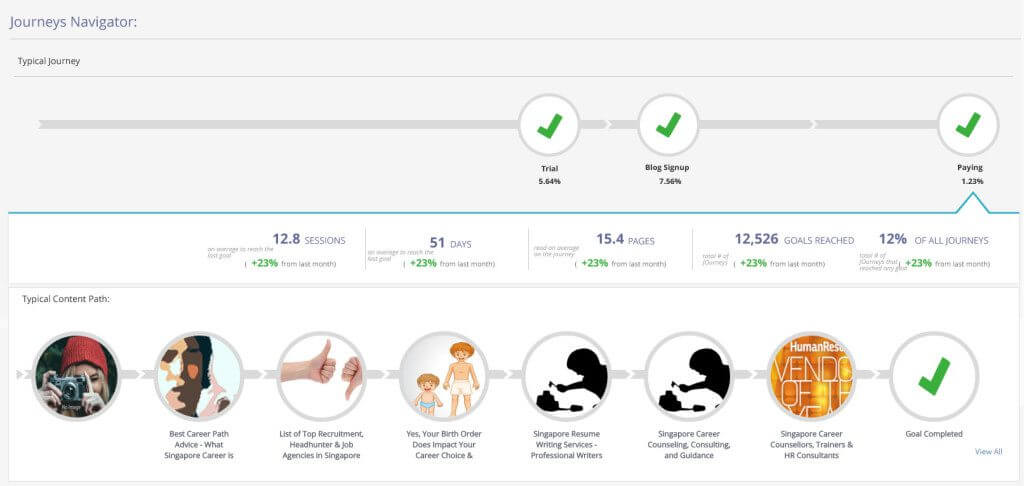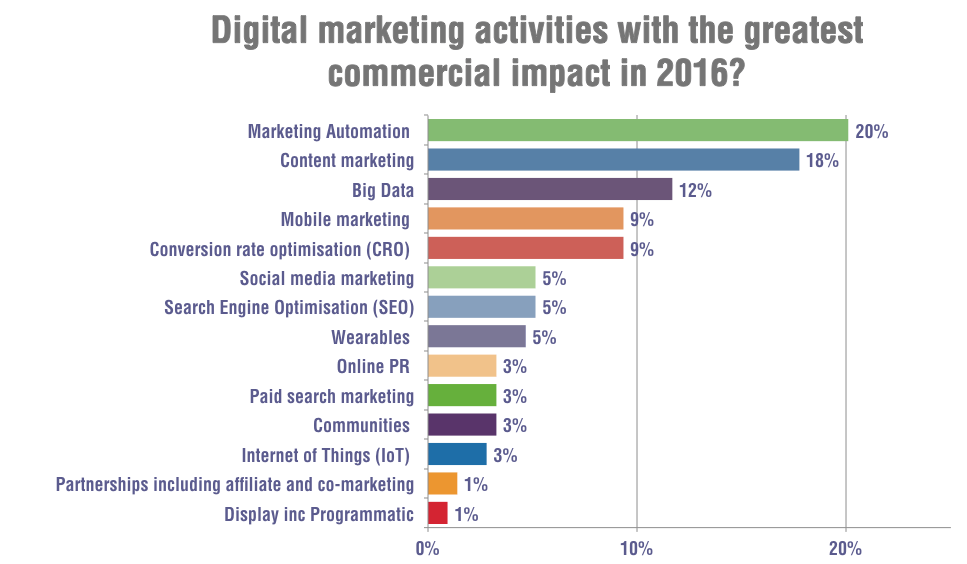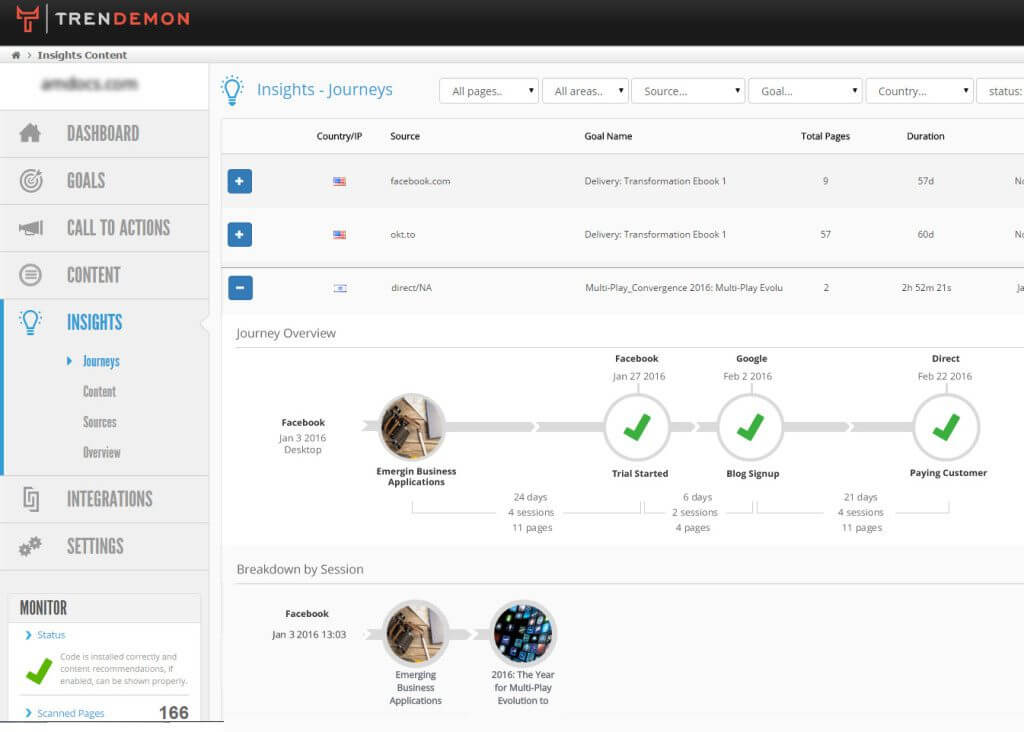What is Content Journey Automation and How Can It Help You Boost Leads

Digital marketers today are collecting and analyzing huge amounts of data in an attempt to connect the dots. One way marketers deal with this overwhelming amount of information is with marketing automation, meaning the ability to carry out actions automatically based on a given set of events. This automation revolution is now starting to penetrate the content marketing space and is helping automate one of the most significant parts of content marketing – content journeys.
First things first – what are Content Journeys?
Content journeys are the paths visitors take through content on their way to a given goal (for example, the pages read before submitting a lead form). These journeys have been around since content marketing started but only recently do we have the technologies to allow us to track and fully understand them.

Why should we care about them and how does it help our growth?
We have an entire post on the significance of mapping and optimizing customer journeys, you can find it here. In a nutshell, understanding customer journeys helps you measure the ROI of your content marketing, attribute value to sources more correctly, allow automation and optimization of future journeys and helps guide your content strategy. It is crucial for achieving sustainable growth from your content marketing efforts.
The intersection of content marketing and marketing automation
Marketing automation and content marketing are 2 of the hottest trends for digital marketers in 2016:

but how to these two efforts come together in B2B marketing? The connecting line between them is journeys. Why? Content marketing is all about guiding a potential customer through content in order to generate a desired action (for example, signing up). Marketing Automation, on the other hand, is tracking and guiding a lead down the funnel to become a sales prospect (and later, to help with retention and up-sell). At the end of the day, it is about guiding a person (in b2b, usually the decision maker), through a desired journey, first through content and marketing funnel then down the acquisition and retention funnel.
In the next steps, we will see how defining the right goals, tracking the journeys and then using automation can help dramatically boost conversions and generate actionable insights about your traffic sources and content. In our example, we’ll use a tech b2b marketer looking to increase leads from the blog.
Step 1 – Setting the right goals
The first task is to correctly define your goals. Goals can be signing up for updates from the blog, signing up for a trial, leaving contact information on a lead form etc.These goals act like online checkpoints which help us understand how people travel to and between the different goals in the site. Some goal can even occur off the main site, and on a different platform (for example, in some financial brands, activities like deposits occur outside of the site on a 3rd party platform).
Step 2- Measuring the effectiveness of your content in relation to your goals and turning data to insights
Now it is time to see how our content performs in relation to our goal. The main challenge here is attribution, and more specifically, multi-touch attribution. Content marketing, as opposed to direct advertising, is a method which takes the longer route to a goal. It relays on providing value to the audience rather than trying to sell to them, communicating with them, rather than interrupting them. Eventually, this yields a higher ROI and better customers but it poses a tracking and attribution challenge. While many traditional models attribute last touch as the source which is awarded with the credit of the conversion, in content marketing, a more elaborate model is required – it is not only the sources that matter but also the levels of engagement of that audience with the content. We need a more complex attribution model which takes into account more factors, tracks journeys over a longer time and provides a more accurate result. The better the accuracy, the better our chances to reproduce these results and invest our resources correctly.
Content marketing, as opposed to direct advertising, is a method which takes the longer route to a goal #ContentMarketing Click To TweetHere’s a typical content journey in a b2b technology company:

A screenshot from the TrenDemon Dashboard showing a journey overview of a paying customer (sources, length, goals reached, etc.), as well as a break down and pages viewed in each session.
Notice that the overall length of the journey to paying is 51 days, with overall of 10 sessions from 3 sources, and 26 pages of content consumed before reaching the goal.
Content marketing analytics is specific example of a multi-touch attribution challenge, which not only needs to consider the traffic source but also the significance of every page visited and read on the site in the conversion process.
Step 3 – Optimizing content journeys
Once we have insights about our customer journeys through content, we can start optimizing future journeys. One way is to use those insights to know which topics and articles have the highest impact on moving visitors down the conversion funnel. Another important insight is about which traffic sources generate the best ROI. See this example of the differences between the performance of different sources: A visitor initially coming from source A took 17 days to convert a visitor to a trial signup, 4 sessions and 5 pages were read. A visitor from source B took 12 days but 7 sessions from other paid sources, and only 2 pages were read before starting a trial. Trying to figure which source was more effective is hard, but we are still missing one important piece of information – which of those visitors eventually became a paying customer and how much did they pay. If we have our goals configured correctly, we should be tracking all of these significant events so that we could correctly attribute the right value to the right sources, not just for a single event, but all throughout the customer journey.
To learn more about how TrenDemon can help with measuring, attributing and optimizing content journeys, drop us a line to schedule a personal demo.